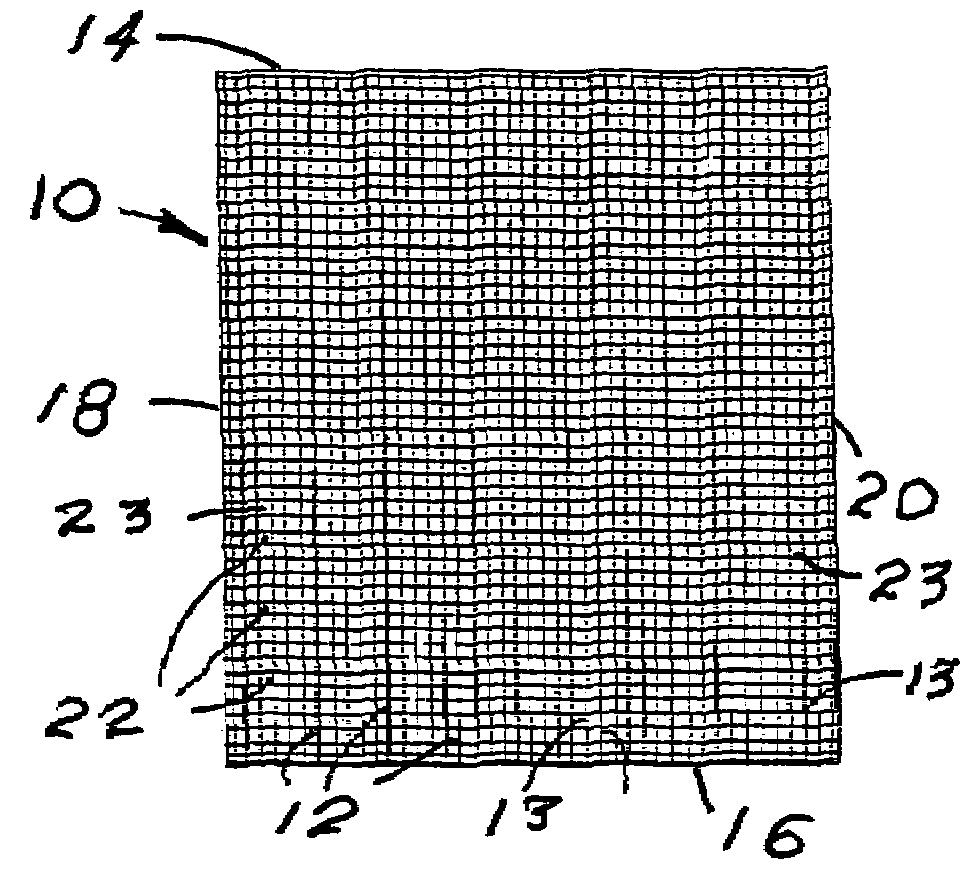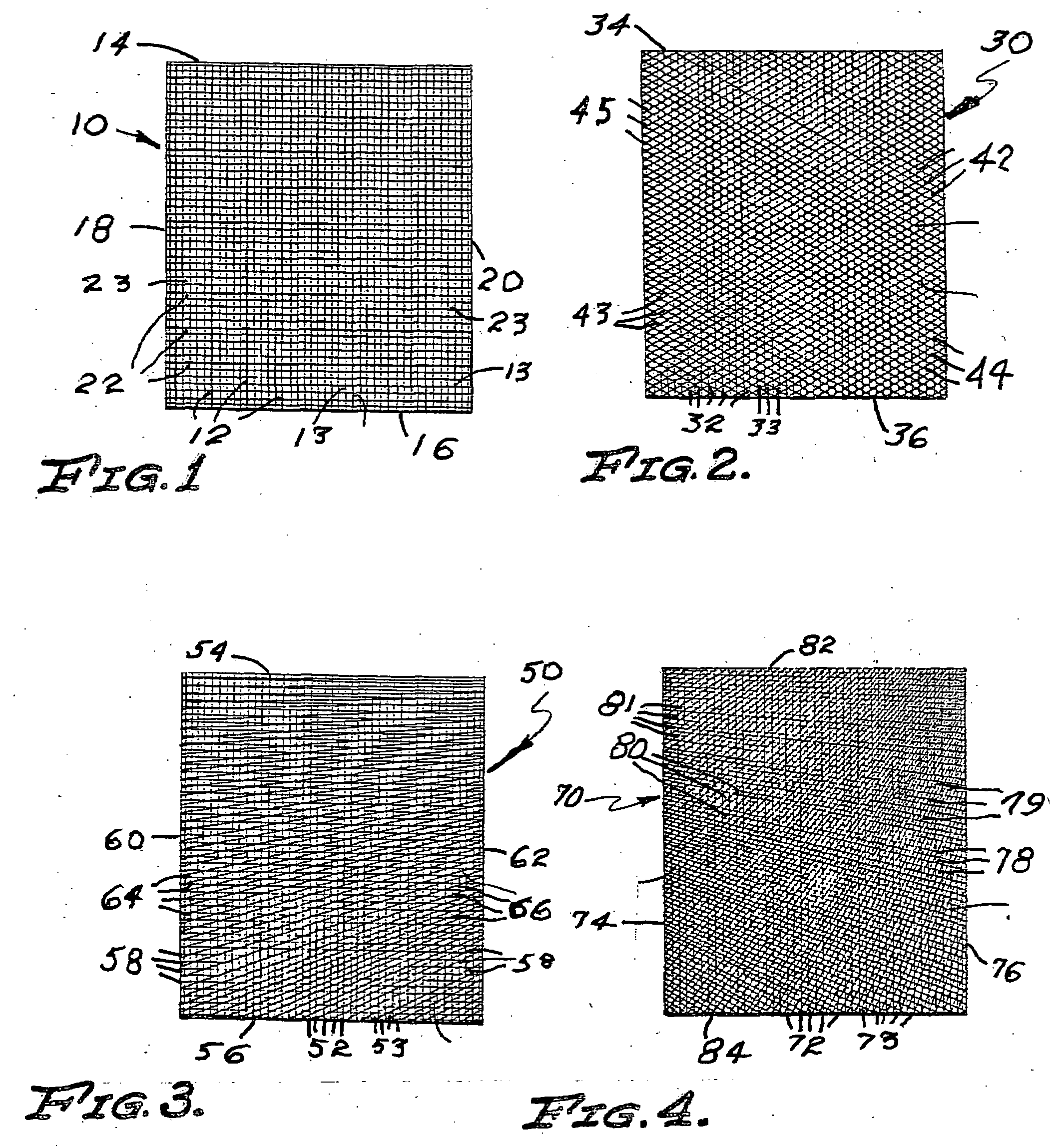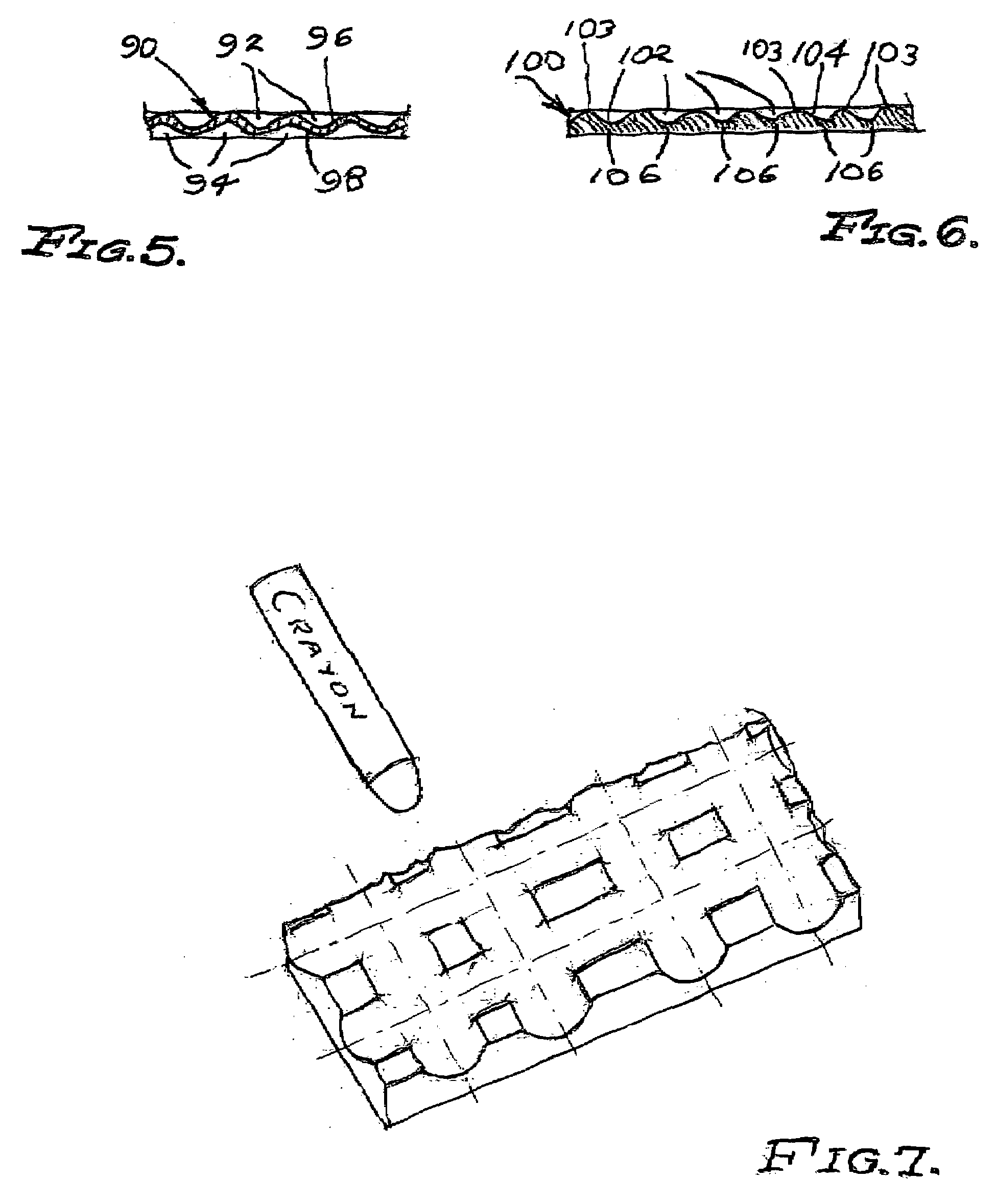Textured sketch papers having grooves to help a sketcher to draw lines and figures without a guide
a sketch paper and groove technology, applied in the field of textured sketch paper grooves, can solve the problems of too hard to draw only a single line, hard to last any length of time at all, etc., and achieve the effects of improving dexterity, visual concepts, and more body
- Summary
- Abstract
- Description
- Claims
- Application Information
AI Technical Summary
Benefits of technology
Problems solved by technology
Method used
Image
Examples
Embodiment Construction
[0014]The heavy duty sketch paper of the invention consists of a sheet of paper that has been embossed to form grooves so that either one side thereof is to have lines and such sketched thereon and is embossed with grooves, or it may be so embossed that there are embossed grooves on both sides of each sheet of the heavy duty sketch paper. Since it is a sheet which has the same thickness throughout it, in the second of those two forms, the embossed grooves appear on the other side of the heavy duty sketch sheet as embossed raised bumps and the raised bumps on the one side appear on the other side as grooves. Because, in one such form, this embossing is usually done using very fine embossing rollers that allow the heavy duty sketch paper to maintain its basic shape of the embossed lines throughout the embossed area as well as on the opposite side thereof, either side of that paper can be used for sketching thereon. That is shown in FIG. 5, and described below in greater detail. In ano...
PUM
 Login to View More
Login to View More Abstract
Description
Claims
Application Information
 Login to View More
Login to View More - R&D
- Intellectual Property
- Life Sciences
- Materials
- Tech Scout
- Unparalleled Data Quality
- Higher Quality Content
- 60% Fewer Hallucinations
Browse by: Latest US Patents, China's latest patents, Technical Efficacy Thesaurus, Application Domain, Technology Topic, Popular Technical Reports.
© 2025 PatSnap. All rights reserved.Legal|Privacy policy|Modern Slavery Act Transparency Statement|Sitemap|About US| Contact US: help@patsnap.com



